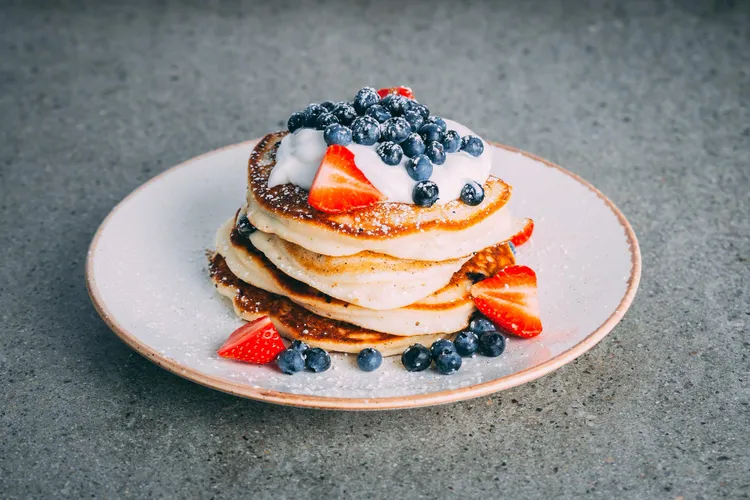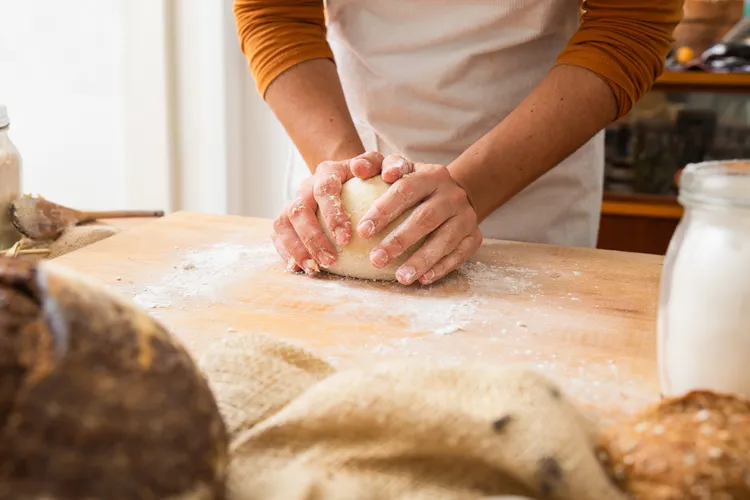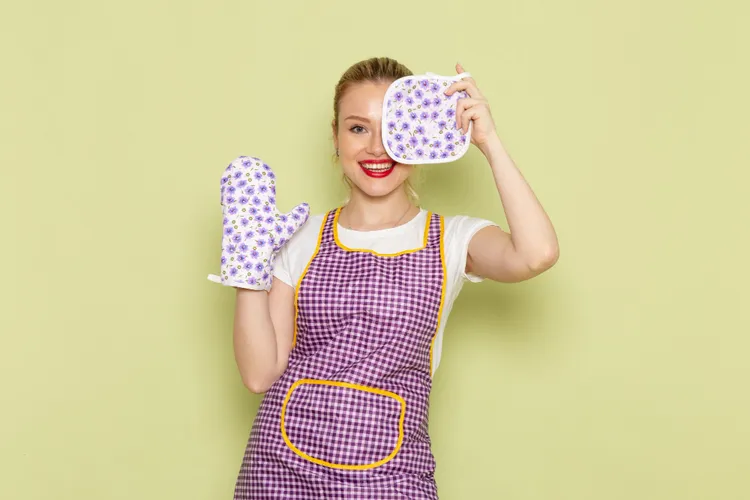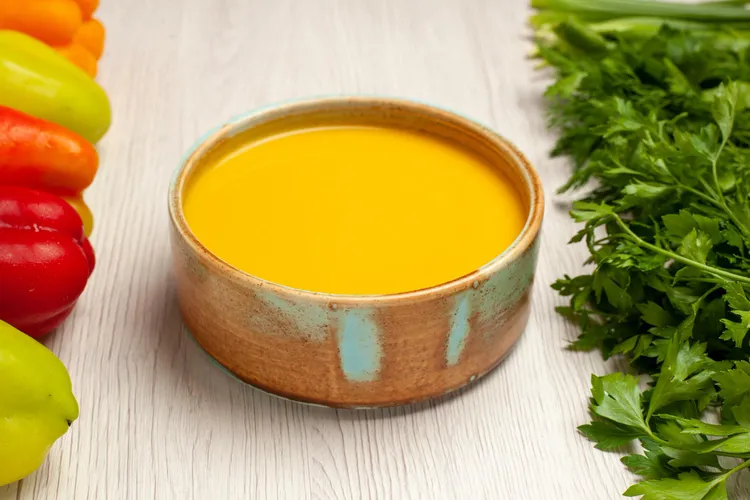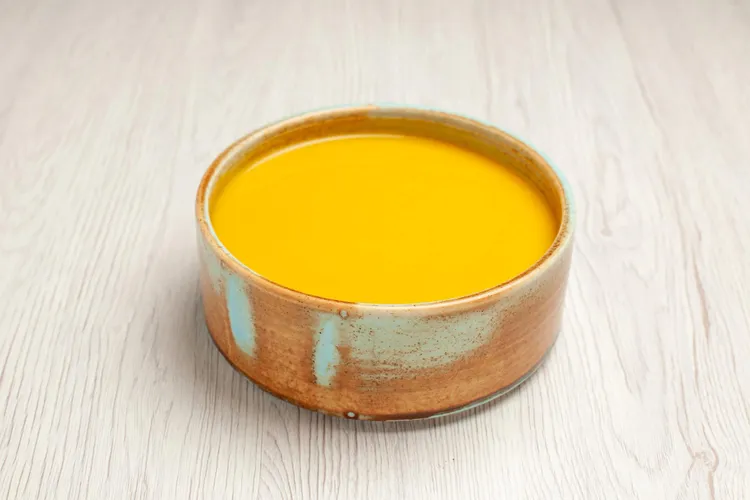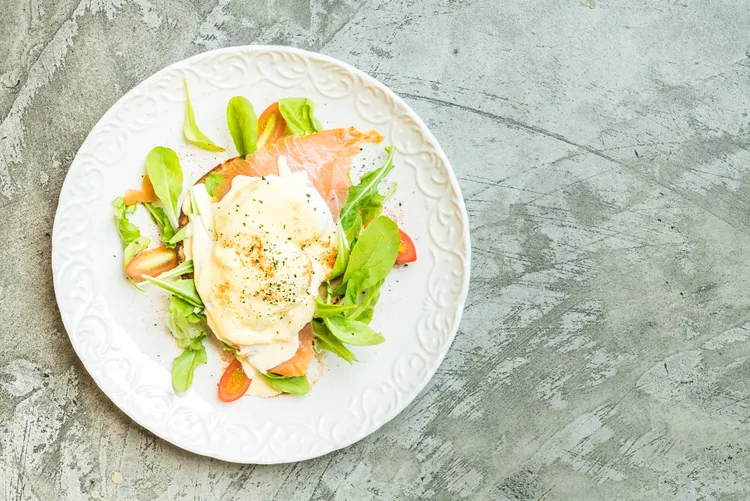How to Master Cooking Without a Recipe: A Beginner’s Framework
Cooking without a recipe is a bit like learning to ride a bike without training wheels. At first it feels shaky and uncertain. But once you “get it,” there’s this incredible sense of freedom. You can open your fridge, see a few random ingredients, and think: “Okay, I know what to do with this.”
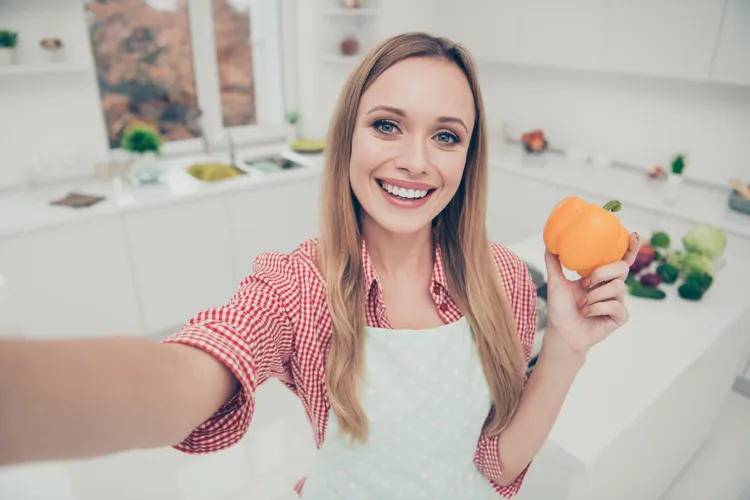
Why Learn to Cook Without a Recipe?
Let’s start with the “why,” because this is what keeps you motivated when a dish doesn’t turn out perfectly (it will happen, and it’s okay).
Freedom in the Kitchen
When you can cook without a recipe, you can:
Make dinner with what you already have on hand
Adapt to allergies, preferences, and cravings easily
Stop constantly Googling “easy chicken recipe” at 6:30 PM
Waste less food and save more money
Confidence and Creativity
Cooking without a recipe isn’t guessing. It’s using patterns: once you understand those patterns, you can improvise safely.
Think of it this way:
A recipe is like reading a script.
Cooking without a recipe is like learning improv - once you know the rules, you can play.
Better, Healthier Food
When you’re not bound to a rigid recipe, it’s easier to:
Add more vegetables
Reduce salt or sugar
Swap in whole grains or lean proteins
Use wholesome fats and fresh herbs
You’re in control, not the recipe card.
The Mindset of a Recipe-Free Cook
Before we get into techniques, we need the right mindset. This is a skill you build, not a switch you flip.
Curiosity Over Perfection
You’re not trying to create a restaurant masterpiece every night. Your goals are:
Edible → Tasty → Great
Learning from each attempt, not judging yourself
Instead of “Did I mess this up?” try asking:
“What did I like about this?”
“What would I change next time?”
Taste As You Go
This is the golden rule of cooking without a recipe.
You should taste:
After seasoning
After sautéing aromatics
After adding liquid
Before serving
Your tongue becomes your main tool, not the measuring spoon.
Think in Patterns, Not Specific Dishes
Instead of thinking, “I need a recipe for lemon chicken,” think:
Protein + heat method + flavor pattern + sauce or finish
Once you see the patterns, “random” ingredients turn into endless possibilities.
The Basic Building Blocks
To cook without a recipe, you need to understand a few core elements: heat, seasoning, texture, and structure.
Heat: How You Transform Food
Common methods you’ll use a lot:
Sautéing (medium-high heat, little oil, quick)
Roasting (oven, dry heat, caramelization)
Boiling/Simmering (for grains, soups, stews, pasta)
Steaming (gentle cooking, preserves nutrients)
Pan-Searing (high heat, browning a surface)
You don’t need every technique; mastering 2-3 will take you far.
Seasoning: Salt, Acid, Fat, Heat
Most dishes need a balance of:
Salt - enhances flavor
Acid (lemon, vinegar, tomatoes) - brightens
Fat (oil, butter, nuts) - carries flavor, adds richness
Heat (temperature and/or spice) - adds complexity
When something tastes “off,” it’s usually missing one of these.
Texture: Crunchy, Soft, Chewy, Creamy
The best meals have contrast:
Crisp vegetables with soft grains
Chewy noodles with tender meat
Creamy sauce with toasted nuts
When you build a dish, ask: “Do I have at least two textures here?”
Structure: The “Skeleton” of a Dish
Most everyday meals can be broken into:
Base - grains, greens, or starch (rice, pasta, quinoa, bread, potatoes)
Protein - beans, tofu, eggs, meat, fish
Vegetables - raw or cooked
Flavor Boosters - herbs, spices, sauces, cheese, nuts
Sauce or Dressing - ties everything together
This structure is your map. You don’t need a recipe - just fill in the slots.
The Five-Step Framework for Cooking Without a Recipe
Here is your beginner-friendly framework. Think of this as your personal step-by-step whenever you look into the fridge.
Step 1: Choose Your Base
Ask yourself: “What am I in the mood for?”
Some options:
Grains: rice, quinoa, bulgur, couscous
Pasta or noodles
Potatoes or sweet potatoes
Bread/wraps (for toast, sandwiches, quesadillas)
Leafy greens (salad or sautéed)
Your base sets the tone: cozy (potatoes), light (salad), quick (couscous), or hearty (pasta).
Step 2: Choose Your Protein
Pick what will make the dish satisfying:
Animal proteins: chicken, turkey, beef, pork, fish, eggs
Plant proteins: beans, lentils, tofu, tempeh, chickpeas, edamame
If you’re short on time:
Use canned beans
Pre-cooked lentils
Eggs (boiled or scrambled)
Thin cuts of meat or fish that cook quickly
Step 3: Choose Your Vegetables
Now ask: “How can I add color and nutrients?”
Fast-cooking: spinach, tomatoes, grated carrots, bell peppers
Medium: broccoli, zucchini, mushrooms, green beans
Longer: potatoes, beets, carrots, winter squash
Think of at least one green and one colorful vegetable when possible. This combines fiber, vitamins, and visual appeal.
Step 4: Choose a Flavor Pattern
This is where it gets fun. You don’t need a recipe - just a small set of flavor patterns you can memorize.
Here are a few simple “maps” you can learn by heart:
Italian-Inspired
Base flavors: garlic, olive oil, onion
Herbs: basil, oregano, rosemary
Acid: tomatoes, balsamic vinegar, lemon
Extras: parmesan, olives
Mexican-Inspired
Base flavors: onion, garlic, chili or paprika
Herbs: cilantro
Acid: lime
Extras: corn, beans, avocado, cheese
Asian-Inspired (Simple Stir-Fry)
Base flavors: garlic, ginger, scallions
Sauce: soy sauce or tamari, a little sugar or honey, rice vinegar
Extras: sesame oil, chili flakes, peanuts
Mediterranean-Inspired
Base flavors: garlic, olive oil
Herbs: oregano, thyme, dill, parsley
Acid: lemon juice or red wine vinegar
Extras: feta, olives, cucumber, tomato
Pick one pattern per dish and stick to it - that’s how you avoid clashing flavors.
Step 5: Pick a Cooking Method & Put It Together
Now you know your:
Base
Protein
Veggies
Flavor pattern
Next, choose how to cook it: sauté, roast, simmer, or a combo.
Below are some reliable templates you can reuse endlessly.
Templates You Can Use Without a Recipe
These are “plug-and-play” blueprints. Swap ingredients based on what you have.
One-Pan Sauté Template
Perfect for: quick weeknight meals, small kitchens, beginners.
You’ll need:
Oil
Aromatics (onion, garlic, ginger, etc.)
Vegetables
Protein (small pieces)
Sauce or seasoning
Optional: pre-cooked grains or noodles
How to do it:
Heat oil in a large pan over medium–high.
Add aromatics (onion/garlic/ginger). Cook until fragrant.
Add protein, season lightly, and cook until nearly done.
Add vegetables (harder ones first, soft ones later).
Add sauce or flavoring (e.g., soy + vinegar, tomato + herbs, or broth + spices).
Simmer briefly until everything is cooked and coated.
Serve over rice/noodles or with bread.
You just made dinner without a recipe.
Sheet-Pan Roast Template
Perfect for: meal prep, “lazy” cooking days, minimal cleanup.
You’ll need:
Tray + parchment or a bit of oil
Chunked vegetables
Protein (chicken thighs, tofu cubes, sausage pieces, chickpeas)
Oil, salt, spices
How to do it:
Preheat oven to 200-220°C (400-425°F).
Cut vegetables into even pieces.
Toss protein and vegetables with oil, salt, and chosen herbs/spices.
Spread in one layer on the tray (space between pieces).
Roast until golden at the edges and cooked through, 20-40 minutes depending on size.
Finish with a squeeze of lemon, a drizzle of olive oil, or a spoonful of yogurt.
Serve over grains or with salad. No recipe required.
Soup/Stew Template
Perfect for: using leftovers, colder days, freezer meals.
You’ll need:
Oil
Aromatics (onion, carrot, celery, garlic, etc.)
Vegetables and/or protein
Broth or water
Seasoning, herbs, and acid
How to do it:
Sauté aromatics in oil until softened.
Add any firm vegetables (carrots, potatoes, etc.) and cook for a few minutes.
Add protein (beans, lentils, meat, tofu).
Pour in enough broth/water to cover.
Add herbs/spices and simmer until everything is tender.
Taste. Adjust salt and acid (lemon, vinegar) at the end.
You can turn anything from “random fridge items” to a cozy bowl this way.
Grain Bowl / Salad Template
Perfect for: light meals, packed lunches, and using leftovers.
You’ll need:
Base: cooked grains or salad greens
Protein
Vegetables (raw or cooked)
Crunch: nuts, seeds, toasted bread crumbs
Dressing or sauce
How to do it:
Fill the bowl with a base (rice, quinoa, greens, or a mix).
Add your protein (beans, chicken, tofu, egg, tuna, etc.).
Layer in vegetables (leftover roasted veg, chopped raw veg, pickles).
Add crunch (nuts, seeds, croutons).
Top with a simple dressing:
3 parts oil + 1 part acid + salt + pepper + herbs
Mix, taste, adjust. Congratulations - you just meal-prepped without a recipe.
Simple Pasta Template
Perfect for: quick comfort food that can still be healthy.
You’ll need:
Pasta
Oil or butter
Aromatics
Vegetables
Protein (optional)
Liquid (pasta water, broth, or cream)
Cheese or nuts (optional)
How to do it:
Boil pasta in well-salted water until just al dente. Save some pasta water.
In a pan, sauté aromatics in oil/butter.
Add vegetables and protein; cook until done.
Toss in the pasta with a splash of pasta water and your seasonings.
Finish with cheese, herbs, or lemon.
You can create endless variations from this one formula.
How to Taste and Adjust Like a Pro
Cooking without a recipe means you are the quality control.
Here’s a simple troubleshooting guide:
If It Tastes Bland
Ask:
Did I add enough salt? (Most common issue)
Would a squeeze of lemon or splash of vinegar help?
Does it need some fat (olive oil, butter, tahini) to carry flavor?
Would fresh herbs brighten it?
Adjust one thing at a time, tasting in between.
If It’s Too Salty
Add more unseasoned base (extra vegetables, grains, or beans).
Add a splash of acid (lemon, vinegar) to balance.
In soups, you can add water or unsalted broth and simmer a bit longer.
If It’s Too Sour or Too Spicy
Add a touch of fat (yogurt, cream, coconut milk, olive oil).
Add something sweet (a pinch of sugar or honey) to balance acid or heat.
Double the base (more veggies or grains) to dilute intensity.
If It’s Too Dry or Too Wet
Too dry: add a little broth, sauce, cream, or reserved pasta water.
Too wet:
Simmer uncovered so liquid evaporates, or
Add more “solid” ingredients (vegetables, grains, protein).
Over time, you’ll start automatically sensing what a dish needs just by smell and taste.
Practice Plan: 4 Weeks to More Confident, Recipe-Free Cooking
You don’t need to be perfect - you just need to practice consistently. Here’s a simple plan.
Week 1 - Master One Sauté
Pick one protein + one veggie mix.
Make a simple sauté 2-3 times, changing only the seasoning pattern.
Focus on: heat control, not burning garlic, tasting as you go.
Week 2 - Master One Sheet-Pan Dinner
Roast mixed vegetables + one protein twice this week.
Try two different flavor patterns (e.g., Italian and Mexican).
Notice how cutting size and oven temperature change texture.
Week 3 - Master One Soup or Stew
Make one big pot of soup using the template.
Use leftovers creatively (over rice, blended, etc.).
Practice adjusting seasoning at the end.
Week 4 - Master One Grain Bowl
Cook a big batch of grains.
Build 2-3 different bowls using leftover proteins and vegetables.
Mix and match dressings: lemon+olive oil, tahini+garlic, yogurt+herbs.
By the end of four weeks, you’ll realize you’re reaching for recipes less and trusting your instincts more.
Cooking as a Conversation, Not a Script
Mastering cooking without a recipe is not about memorizing dozens of dishes. It’s about learning the grammar of food:
How ingredients behave with heat
How flavors balance each other
How textures play together
How to taste, adjust, and trust yourself
Think of every meal as a conversation between you and your ingredients. Some days it will be smooth and lovely. Other days it’ll feel a little awkward - and that’s okay. You learn something every time.
With this beginner’s framework, you now have:
A way to structure any meal
Simple templates you can repeat and remix
A basic understanding of flavor, heat, and texture
A practical practice plan to grow your confidence
The next time you stand in front of your fridge and think, “I have no idea what to make,” remember:
You don’t need a perfect recipe.
You just need a base, a protein, some vegetables, a flavor pattern - and the willingness to start.
And that, truly, is how you begin to master cooking without a recipe.

